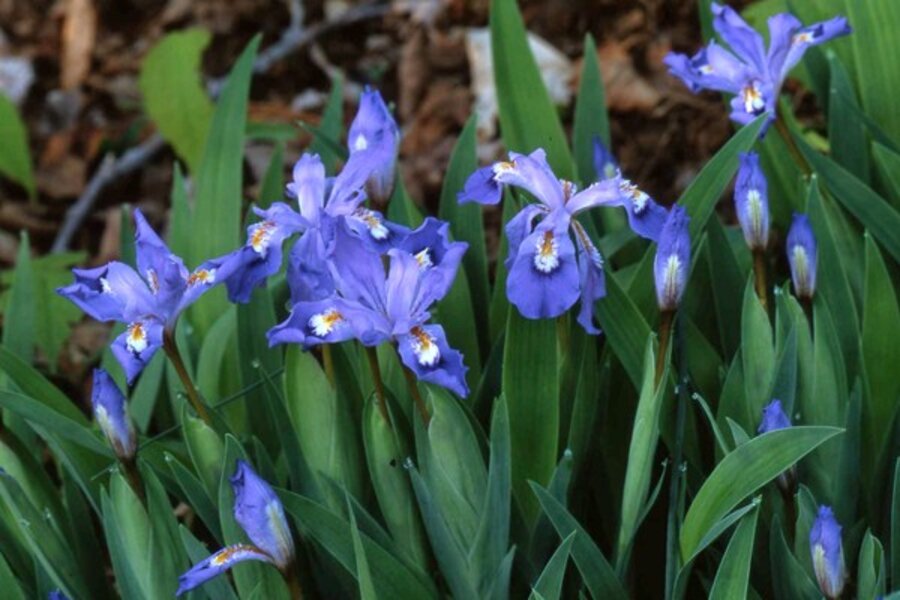Iris cristata, a native plant, is a charmer in the shade garden
“If you could have only one” is a favorite game of mine to play when selecting plants for my gardens.
Take the Iris family, for instance. There is almost an unending number of species and hybrids to choose from. Being a shade gardener narrows the selection down considerably, but there are still numerous suitable species to choose from.
In this case it does not take long to choose that one iris, and my selection is Iris cristata.
What a difference the site makes
I first became aware of Iris cristata in native plant guides, and soon found them in local woods. The first ones I located were in scruffy open patches without bloom for they grew too far back among mature trees.
I was not impressed until I happened upon a large drift of blue blooms that covered an embankment along a country road, an area at least 50 to 75 feet by 25 feet, just at a woodland edge on an eastern exposure.
I almost ran off the gravel road in my haste to locate a place to park. It was love at second sight, and my ardor has not cooled to this day.
Crested irises begin the season as fresh, bright green, pointed blades quickly extending to swords about three to four inches in height. Blooms will set just above the tips in perfect display.
After the flowers are pollinated, and as they fade from age, the foliage extends to about six or eight inches in height hiding any seedpods produced.
Rhizomes are very shallow, creeping about just below the leaf litter. Frequently one can see the network of roots and rhizomes appearing as thin, branched, brown twigs with tiny white eyes at each end.
Blooms are large in comparison to the overall size of the plant, having three upright standards and three falls, where the crests are found. Crests are small, located on a yellow band that is bordered in white.
Color and location
Crested woodland iris is quite variable in bloom color, but in my local woods the color is some hue of lavender-blue.
Numerous named cultivars exist, with plant size and bloom color being the primary variables. I enjoy our local native, a large cultivar with the name of ‘Powder Blue Giant’ and an all-white blooming ‘Tennessee White’.
As I discovered, this species of iris is generally found growing on decent soil on slopes of hillsides, ravines, and ledges, so it works well in well-drained soil with adequate moisture. It blooms best when given light but not full sun.
My garden has a northern exposure, and I grow my drifts on the west side of my garden in the setting sun, along with an open spot on a path under a dogwood.
Blooms appear in late April and early May, so I can enjoy a good assortment of spring bloomers beside and among my woodland iris. Shooting stars (Dodecatheon), trilliums, small to medium ferns, and Solomon seals are some I enjoy. Iris cristata also make a great ground-cover beneath small blooming shrubs, or medium to large perennials.
Editor's note: Please return to Diggin' it on Friday, to read about dwarf bearded irises.
-----
Gene Bush, a nationally known garden writer, photographer, lecturer, and nursery owner, gardens on a shaded hillside in southern Indiana. His website is www.munchkinnursery.com. He also writes the Garden Clippin's Newsletter. To read more by Gene here at Diggin' It, click here.





